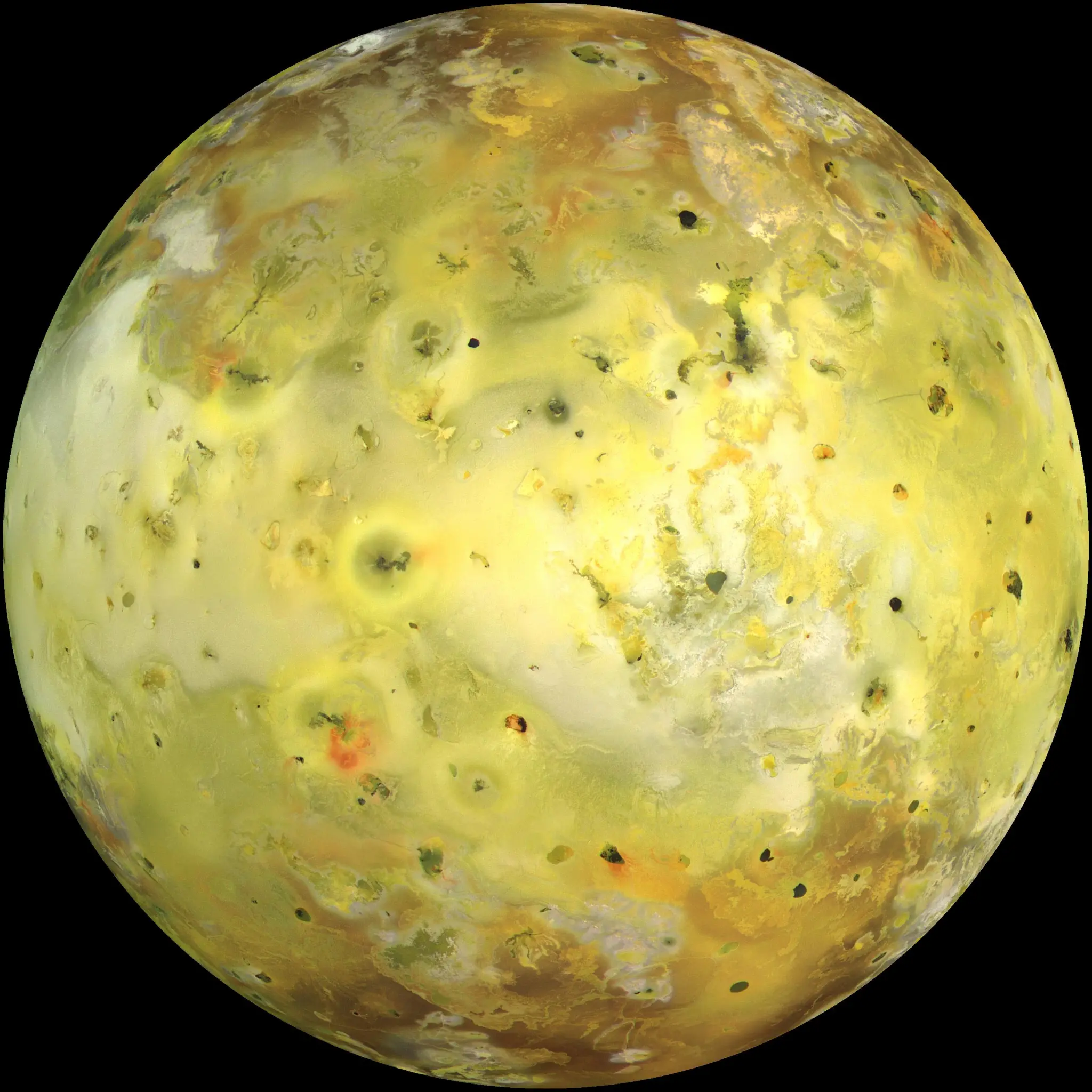
The most volcanic body in the solar system, Io is an infernal hellworld that constantly spits sulfurous magma into space. And a new study suggests that it’s been that way for a long, long time.
The study, published in Science, indicates that for most of — or possibly all — its 4.57 billion years of existence, Io has been an angry world. As Jupiter’s innermost large moon, it is subject to an intense gravitational tug-of-war between is massive parent planet and nearby large moons Europa and Ganymede, both of which are locked in resonant orbits. (For every four times Io orbits Jupiter, Europa does so twice and Ganymede once.)
Looking back at Io
Because Io is so volcanic, its surface is relatively young and can’t be used to peer very far back into the moon’s history. Instead, the study authors used the Atacama Large Millimeter/submillimeter Array (ALMA) to look for the presence of stable sulfur and chlorine isotopes in Io’s thin, tenuous atmosphere. Isotopes are atoms of a single element that have the same number of protons, but varying numbers of neutrons in their nuclei.
They hoped the presence of certain isotopes could better reveal the history of volcanism on the world, as sulfur dioxide and chlorine gasses are released during volcanic activity, so their presence and concentration in the atmosphere could be telling.
What they found was that lighter isotopes seem to be depleted, while heavier isotopes dominate the current volcanic outbursts, which spew an average of about one ton of material per second across the world. This indicates Io has already depleted about 94 to 99 percent of its available sulfur, which in turn is “evidence that … Io has been losing sulfur essentially for the entire time period of its existence,” study lead author Katherine de Kleer, a planetary scientist at Caltech, says.
Sulfur budget
Assuming Io initially held some 20,000,000,000,000,000,000,000 (or 20 sextillion) tons of sulfur, the amount it’s lost so far leaves roughly 200 quintillion to 1.2 sextillion tons of sulfur still within the moon to drive new eruptions. That may seem like a lot, but at the rate it’s going, “before the end of the solar system, before the Sun expands and swallows some of the planets and changes everything, Io will run out of his sulfur,” de Kleer says.
Planetary scientists don’t know quite what will happen next. After all, the tidal stresses on Io won’t go away. “It’s kind of fun to think about what Io’s volcanism might look like when it doesn’t have that sulfur-rich gas driving it.”
Magma can’t just make its way to the surface prior to an eruption — it needs gases to push it along. That’s why the sulfur dioxide is so important. And “without the sulfur dioxide, there’d have to be something else to drive the magma to the surface,” de Kleer says. “I haven’t done the chemistry of what case Io would be if there’s a different, more exotic gas that would be the primary driver.”
Follow-up observations using ALMA to look for other sulfur isotopes could help piece together the early history of Io and confirm these observations. This would provide “a good test of that model and maybe allow us to refine how that process is working a little bit more,” de Kleer says.
But the current study also gives insight into how Jupiter’s Galilean moons — Io, Europa, Ganymede, and Callisto — formed, as their orbits indicate these moons likely formed in the places they’re at now. “If Io has been volcanically, active for billions of years, then that means that these three moons have been in this dynamical configuration potentially for the entire age of the solar system,” as well, de Kleer says.









